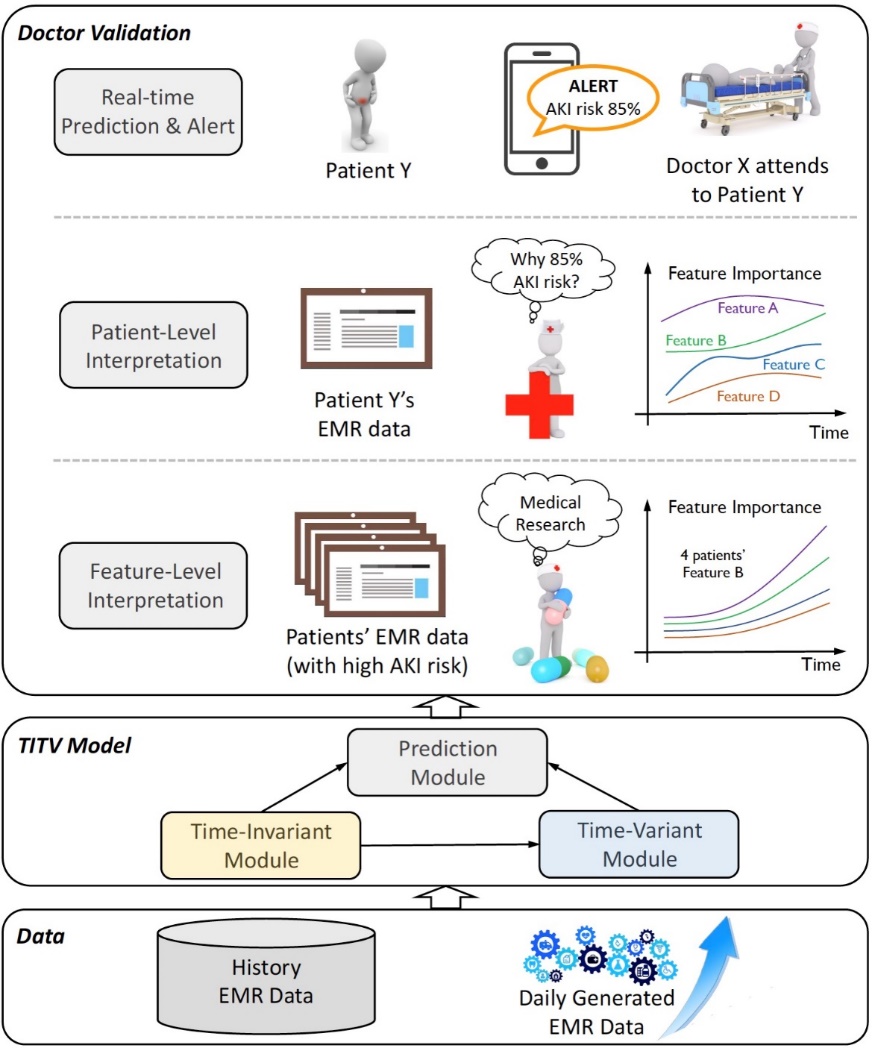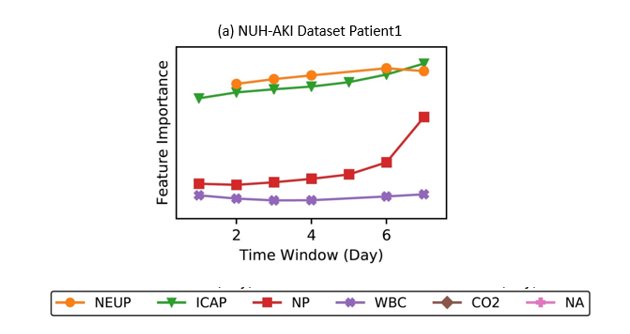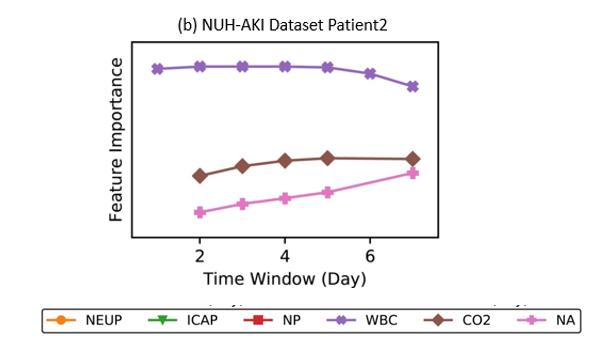Acute Kidney Injury Prediction
We propose a general framework TRACER to facilitate accurate and interpretable decision support for healthcare analytics and other high stakes applications. The overview of TRACER in healthcare analytics is shown in Figure 1.

Figure 1: TRACER Framework
In the hospital-acquired AKI prediction, we show the patient-level interpretation results of TRACER for two representative patients who developed AKI after 48 hours in Figure 2 and Figure 3, with the features involved: “Neutrophils %” (NEUP), “Ionised CA, POCT” (ICAP), “Sodium, POCT” (NP), “White Blood Cell” (WBC), “Carbon Dioxide” (CO2) and “SerumSodium” (NA).

Figure 2: NUH-AKI Dataset Patient1
As shown in Figure 2, in Patient1’s interpretation results provided by TRACER, we observe that NEUP feature shows increasingly higher importance along with time, and WBC is of stable importance. These suggest that Patient1 is suffering from worsening inflammation or infection which both NEUP and WBC respond to, although they exhibit different Feature Importance changing patterns.
Then we find that ICAP and NP, two kinds of ionised electrolytes in the human body, have a Feature Importance increasing with time. Due to their medical functionality, such as hypocalcemia in AKI and adverse outcomes, and dysnatremia with kidney dysfunction, we presume that Patient1 is developing a worsening electrolyte imbalance along with worsening infection, and thus at high risk of progressing to AKI soon.

Figure 3: NUH-AKI Dataset Patient2
For Patient2 illustrated in Figure 3, a relatively high and stable feature importance of WBC is observed, which indicates the presence of inflammation or infection. Besides,CO2’s (bicarbonate) Feature Importance is also on the increase, which is explained by acidosis that builds up with progressive kidney dysfunction, or worsening lacticacidosis with circulatory shock and end-organ injury including AKI.